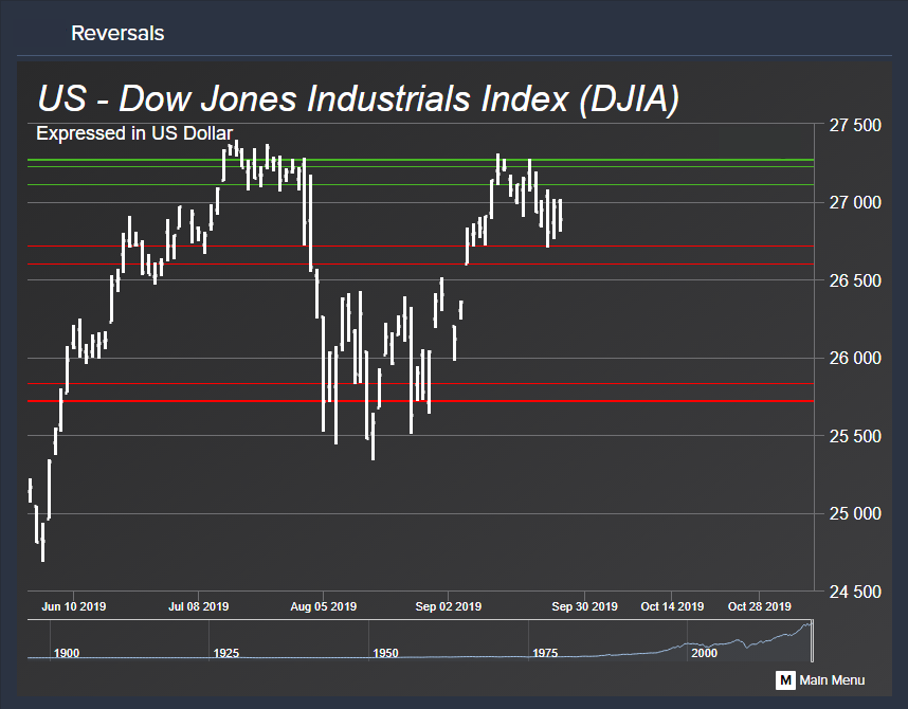Reversal System
The Reversal SystemOne of four Socrates Platform core models. The Reversal System is a computer model based on the theory that specific pressure points (the reversal points) exist within price movement. is a computer model that analyzes the movement and energy of a covered market's price activity to identify pressure points. These pressure points are referred to as reversal pointsReversal points are generated each time a market produces a new isolated high or low on an intraday basis..

- A reversal point is generated when a new, isolated high or low occurs in the market.
- A reversal point becomes active once the high or low that generated the reversal point holds in place for at least one additional time unitThe time level being considered: days, weeks, months, quarters, or years..
- A reversal point is elected when it is crossed on a closing basis.
-
A bearish reversalA reversal that is generated from a high. If the market should close below the reversal point, then the uptrend reverses into a bearish or declining trend. Bearish reversals can only be elected if the market closes below the reversal. is generated from a confirmed high and is elected only if the market closes below that bearish reversal point.
- A major bearish reversal is generated from the highest high in a relative period of time.
- A minor bearish reversal is generated from a reaction high that appears within a short-term trend.
-
A bullish reversalBullish reversals are generated from a low. If the market should close above the reversal point, then the downtrend will reverse into a bullish or increasing trend. A bullish reversal can only be elected if the market closes above the reversal. is generated from a confirmed low and is elected only if the market closes above that bullish reversal point.
- A major bullish reversal is generated from the lowest low in a relative period of time.
- A minor bearish reversal is generated from a reaction low that appears within a short-term trend.
- On the Socrates Platform, most reversal points are generated from a single high or low, but some are identified as double reversal pointsDouble reversal points are generated twice on the same high or low. These usually occur a few times a year on the daily level, and once every two to three years on the weekly level., which are generated twice by the same high or low.
ReversalsOne of four Socrates Platform core models. The Reversal System is a computer model based on the theory that specific pressure points (the reversal points) exist within price movement. are available to Pro level members with premium market subscriptions and are shown in your Pro Member Grid and on the Reversals tab in the Pro member premium tools.
Importance
Electing key reversal points can signal a continuance in market direction or a possible turning pointA point in time at which a market direction change occurs or may occur. Also called a target date. in the opposite direction.
- As pressure in price movement builds in one direction or another, reversal points represent possible levels of support or resistance.
- If a market has been in an uptrend but closes below a monthly bearish reversal, this indicates that the uptrend may reverse into a bearish or downtrendThe targeted move does not need to be an actual high or low. During periods of high volatility, it is likely that the turning point and directional change will converge in the same time period. This normally occurs when a market is making a spike high or low..
- If a market has been in a downtrend but closes above a monthly bullish reversal, this indicates that the downtrend may reverse into an uptrend.
- Experienced investors and traders can study reversal points as part of a broader strategy in which they consider possible price levels for market entry or exit, if supported with additional appropriate research.